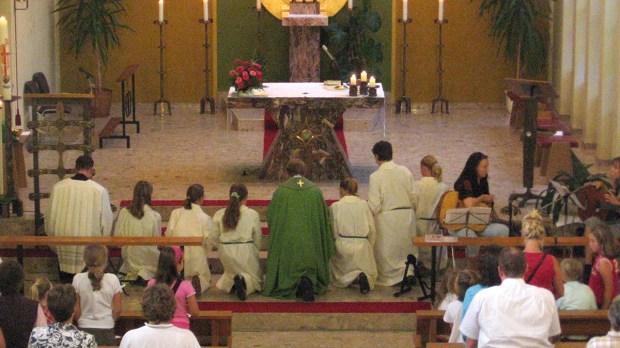Whenever you enter a church or chapel that is hosting a time of Eucharistic adoration, where the Eucharist is exposed in a monstrance on the altar, some will genuflect with one knee, while others will kneel briefly on two knees.
Is there a rule about genuflection in the presence of the Eucharist?
In 1973, the Sacred Congregation of Divine Worship issued a document, Eucharistiae Sacramentum, that said, “Genuflection in the presence of the blessed sacrament, whether reserved in the tabernacle or exposed for public adoration, is on one knee.“
This is the only requirement for Eucharistic adoration.
Prior to Vatican II, the general custom was to genuflect on two knees during adoration. This is no longer the universal practice in the Catholic Church, though people may choose to maintain it.
Some may even choose to lay prostrate on the ground during adoration, though this is often not practical and can be distracting for those present.
Genuflection is a gesture ultimately directed towards God, truly present in the Holy Eucharist. We don’t genuflect to people (as some cultures did in the past) or material things, but to God alone. To genuflect in the Roman Rite is to recognize God’s presence and to offer him a dart of love.
The gesture is unique to the Roman Rite of the Catholic Church, as Eastern Christians are more accustomed to bowing, which was the earlier practice of the Church for many centuries.
Above all, our gesture should not be done mechanically, but out of our love for God. Whenever you encounter Jesus exposed for public adoration in the Eucharist, perform your gesture with that love in mind.



